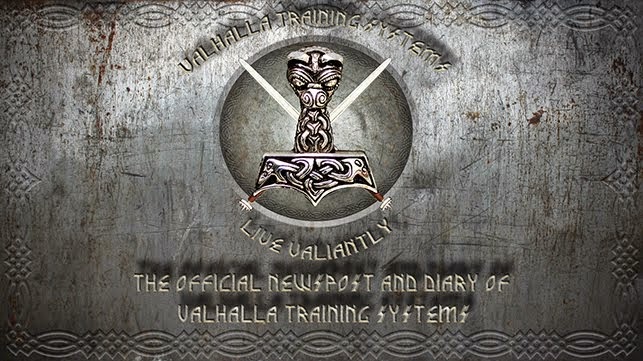As pointed out by someone, bladework is highly complex. Hopefully, everyone will have an appreciation for how a weapon, as a force-multiplier, can significantly change the dynamics of a combat encounter. In lay terms, it's the difference between going home with a faceful of bruises and bleeding out in a gutter. Being aware of this fact is also the key to making use of bladework as a conditioning tool for empty-hand work, as I mentioned at the end of class. A sense of real threat - brought under control and put in its proper place - sharpens the senses and refines movement. Learning to tap into this state allows one to turn down the tap on the adrenaline, slowing it from a flood to a trickle, so we aren't held prisoner by our monkey and reptile brains.
Homework Assignment
- Joint mobility routine as practiced in class: Daily
- Wall-walking with fists: Find a wall and, placing your fists on it, walk your feet backwards and your fists down the wall until you can no longer support yourself, whereupon place your fists upon the ground in a pushup position, then begin to walk your fists and body back up the wall, endeavouring to maintain a perfectly straight body with the bare minimum necessary muscular tension at all times. More advanced students may opt to do a pushup each time they reach the bottom.
- Forward roll and basic back fall: As practiced in class. Begin from kneeling or squatting for those new to the skill.
All the above should take no more than 20 minutes a day, so they should be practiced daily between now and the next class. Old-timers continue with the additional practice from previous classes, and feel free to initiate the newcomers into the exercises also.
Theme
1.
Preparation for and fundamentals of
work with and against blades
2.
Use of blades as conditioning tools
for empty- hand work
Basic
Joint Mobility
Neck:
Forwards/backwards glides, side-to-side glides, side-to-side tilts, rotation
Shoulders:
Basic rolls, forwards and back, figure-8s of the arm
Elbows:
Drill bit
Wrists:
Up and down, side to side flexing
Hands:
Finger roll to fist and OK-sign
Thoracic
Spine: Forwards and back arch, side-to-side glide
Lumbar
Spine: Forward and back bend, side-to-side bend
Hips:
Forward thrust and sit-back to squat, side to side squat, Leg figure-8s (NEW)
Knees:
Basic circles
Ankles:
Basic circles
Four-corner balance drill
Basic
Neural and Structural Prep Drills
-
- Fist-walking on prone partner’s body
- Dependent striking/basic striking and absorption
- Forward roll-to-knife-grab
-
Skill-Specific Biomechanical Drills
- Leverage
disarm drill
- Body figure-8 to stab
- Biker flip grip change
- Figure-8 draw cut
- Rolling snap cut
- Finger-flip
Preparatory
Partner Drills
-
Partner push drill with blade: uke manipulates tori’s body with pushes of knife point; progress to cuts with edge
as familiarity grows; start slow, gradually progress speed according to comfort
level
-
Zombie-walk drill with knife: progress
to arm-drape and shadow
Marionette drill: Tori manipulates uke's body to cause structural collapse in 3-5 movements; uke remains passive and offers no active resistance
Marionette flow drill: Same as above, but in flowing rather than staccato fashion, aiming to smooth out the transition between stable to unstable posture.
Primary
Skill Drills
Bladework
-
Evasion versus blade: tori
evades stab from uke while
endeavouring to remain close to uke
without giving opportunity for reprisal from uke; begin with single stabs and progress to multiple attacks –
including cuts – according to comfort;
ditto with speed
-
Evasion versus blade variation: tori
evades with back to wall, removing option for backwards step
-
Evasion to trap: tori
evades blade and traps it on body with minimal manual contact
-
Evasion to trap and disarm: same as
above, progressing to disarm
-
Evasion to trap and disarm and/or
takedown: As above, now including option
to take down uke




